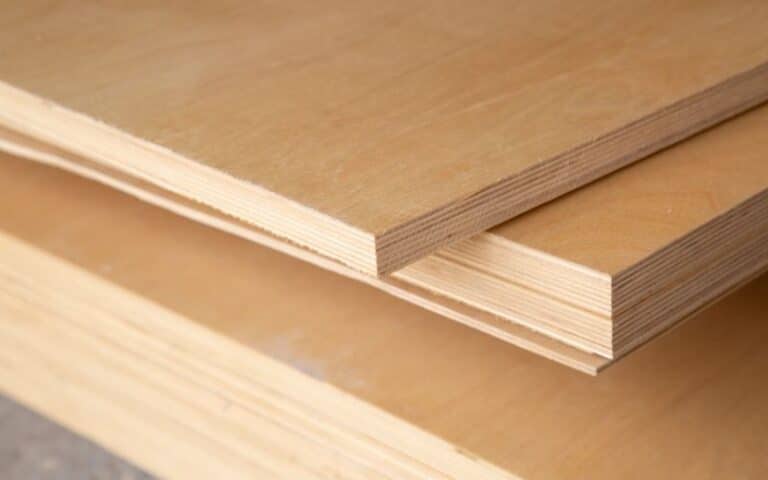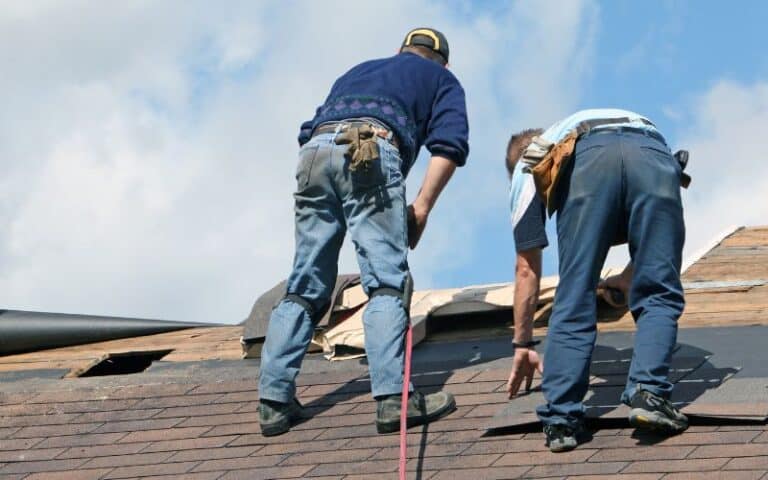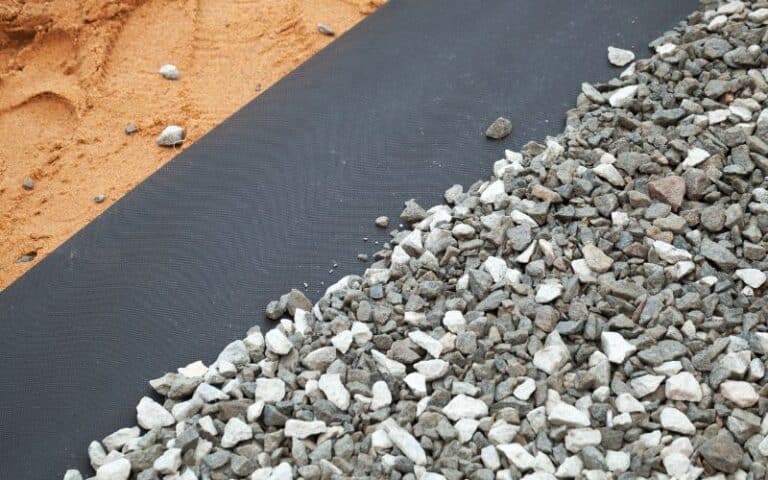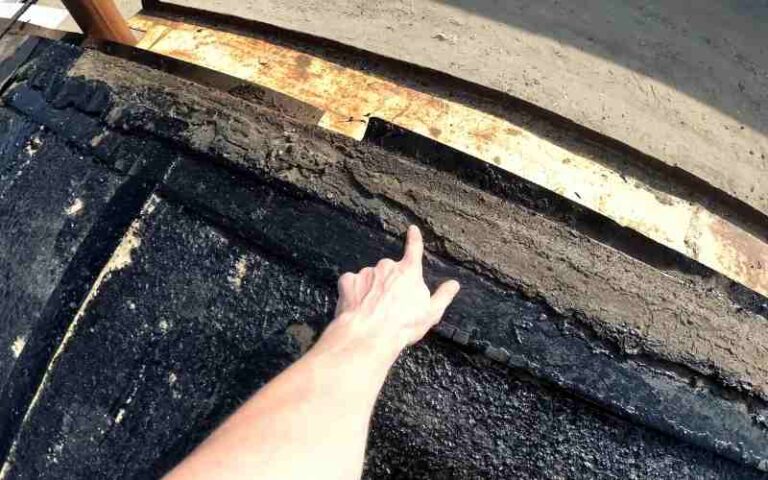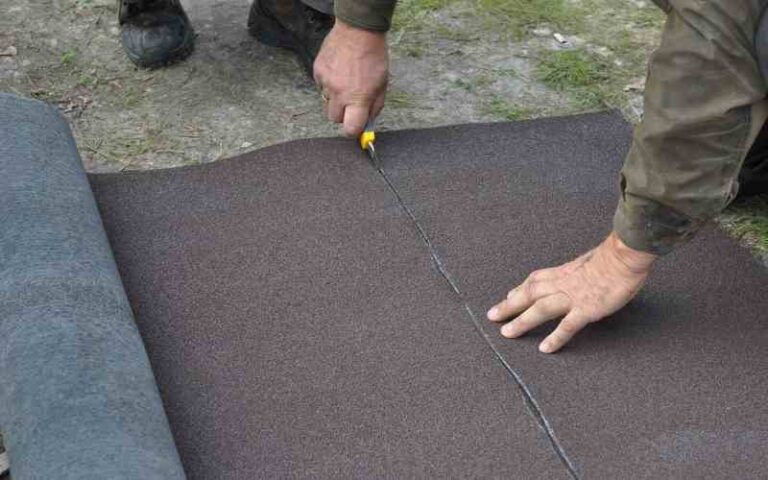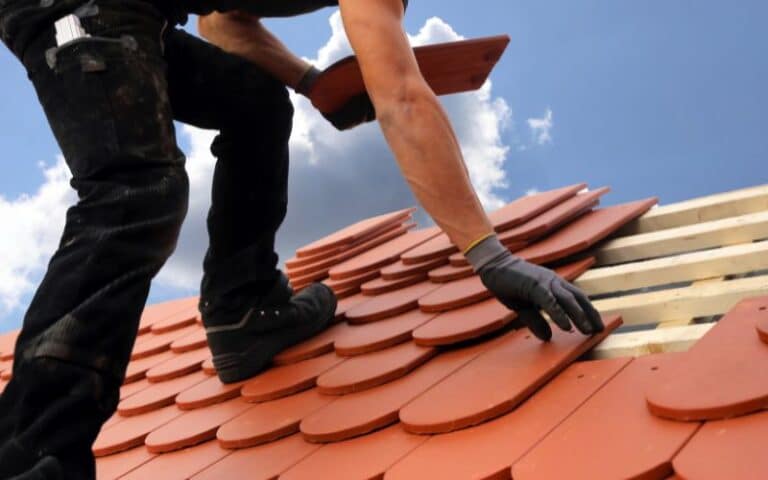You have several choices when it comes to choosing the right roof style.
The standard options include gable roofs, hipped roofs, and flat roofs, but which one do you prefer? Hip roofs come in many different types, from pyramid hip roofs to saltbox hip roofs and even gambrel hip roofs, but do hip roofs need gutters?
At least two million homes in the United States have hip roofs. Hip roofs differ from gabled roofs because they have no vertical wall below the roofline, so rainwater can run off in any direction without being directed by gutters or spouts.
It’s essential to understand why and how to install them if you choose to add them later.
For a hip roof type, installing a gutter is necessary because it keeps water from damaging your home by directing rainwater away from it. However, installing it depends on your home architecture. In low-rainfall areas, you may not need to place a gutter on your hip roof, but if you do, it must be all around.
Ready for a Roofing Quiz?
How to Install Gutters on a Hip Roof?
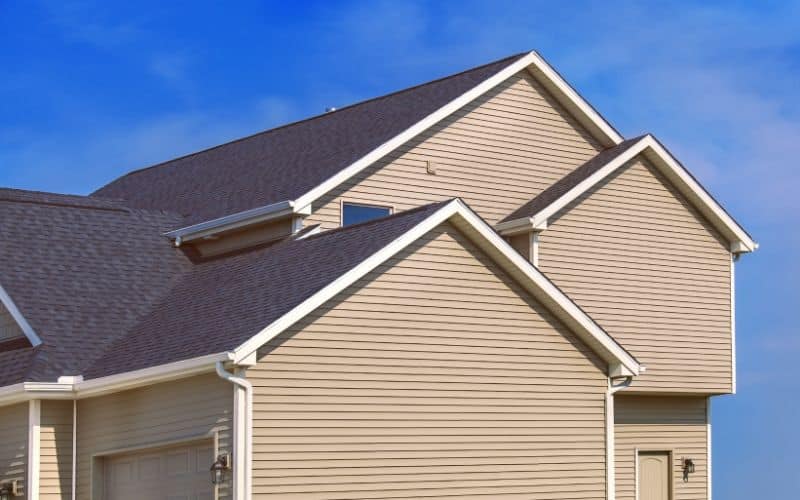
Hip roof type gutter installation is similar to other roof types as they come in many styles and professionals do the building; you can do it yourself with some DIY expertise and the correct tools.
Even with a smaller house, it’s a big project as the job will take a few days and you should do it without rain. There are a few things you need to consider regarding gutter installation.
The first is the gutter drainage area, the total amount of water your gutters can handle; you’ll need to ensure that your gutter drainage area is large enough to hold water.
The second is the hip roof types; depending on your home’s specific needs, you’ll be able to use just one kind of gutter or multiple types to accommodate your water drainage requirements.
Follow the steps in the table below to install a gutter on your hip roof.
| Steps | Description |
|---|---|
| Planning | First, chalk the roof fascia and start at the downspout. The house’s size determines how many downspouts to install; Install them in building corners. Each end of a long wall should have a downspout. |
| Putting the gutter brackets in place | After measuring and making additional preparations, attach the gutter brackets. Roof fascia should have nailheads, usually every 16 inches. With chalk, mark every second rafter and drill pilot holes into each mark. Screw 2 or 3-inch screws on the brackets, which must be driven well into the rafter ends. |
| Cutting the GuttersBefore installing gutters on your hip roof type, trim them to size. Cut the gutter with a power miter saw; you should trim each end at 45 degrees to meet the subsequent gutter segment at the building corners. Since you’re installing gutters on a hip roof, they should go around the entire home. Cut downspout openings, mark, and cut holes to accommodate the downspout. | |
| Installing gutters | Place the gutters in the brackets. Slip these into the hooks, and then use flanged nuts and screws to connect the gutters. If you have someone to help, this part is a lot easier. |
| Put the downspouts in place. | Lastly, please put them in place; they should be securely attached to the house’s walls with brackets. Attach the gutter elbows to the downspouts using the rivets. Downspouts receive more significant weather damage, so they must be carefully installed. |
Is It Okay to Not Have Gutters on Hip Roof?
It is not compulsory to have gutters on your hip roof; however, it is good for you to have gutters on your hip roof.
Gutters need to go all the way around a rooftop with a hip. Even though the initial cost will be higher, there will be less damage from water, in the long run, provided the gutters are kept clean.
Gutter systems are required for most homes and can be an effective way to keep your home from getting damaged.
However, a house with a hip roof style doesn’t necessarily mean that you’ll need a gutter system.
When determining whether or not you should install a gutter system on your hip roof, there are many factors to consider.
The first is how frequently it rains in your area of residence and where your roof drains so that water doesn’t end up inside.
Another factor to consider is whether or not your state has specific gutter laws.
Some states require that you have a way of diverting water from your roof, so if you live in one of these areas, it’s crucial to get a permit for any modifications made to your home.
It might affect your drainage system if you do not have a gutter installed on your hip roof style.
Hip roofs have a steady slope that makes it hard for waste to get stuck and easy for water to pass into the gutters.
All four sides of a hipped roof slope down, making it easier for water and snow to spread out evenly.
They can meet at a point called a “tent” or along a “ridge”; all four sides need gutters. Since water flows down all four sides of the eavestrough, it may be possible to make it smaller.
What Type of Gutters Work with Hip Roof?
You can put almost any gutter system on a hip roof type, but it has to go around the rooftop, not just in some section.
You may want to consider a few factors before deciding which gutter on your hip roof you should install.
The first is the amount of rainfall in your area. If you live in areas with high rainfall, you’ll want to ensure your gutters can handle the volume of water.
Second, you’ll want to consider the size and pitch of your roof. The larger and steeper your roof is, the more likely water will pool in certain areas.
Hip Roof Gutter Design
To keep things flowing, fit your gutters to your roof’s architecture. The gutter on your hip roof must be all around for a hip-roof style.
Although the initial cost is more, you will reduce water damage if gutters are maintained.
Gutters keep water away from your home’s foundation and from pooling around your home, which can cause water damage. They also help keep your landscaping healthy by preventing erosion.
The slope of your roof will determine which type of gutter system you choose. Ideally, aiming for a 15-degree pitch on your gutter would be best, with a 20–25-degree angle considered adequate.
If your roof is steeper, it will be challenging to install traditional channels because you can only rate it up to a 30-degree slope.
Advantages of Gutters on a Hip Roof
When it comes to protecting your home from water damage, installing gutters is one of the best things you can do.
Gutters help direct water away from your home, preventing it from seeping into your foundation or causing leaks in your roof.
They also protect your landscaping by redirecting rainwater away from delicate plants and flowers.
Gutters can also help reduce the risk of mold and mildew growth in your home by preventing moisture from building up around the foundation.
It will also provide a cleaner environment for you and your family, as gutters will catch debris before passing onto your lawn or into storm drains.
Conclusion
The hip roof style requires gutters around the rooftop, which keep water away from your home’s foundation, help protect it from water damage, and prevent it from pooling around your home.
However, consider your home’s architecture before installing a gutter on your hip roof.

